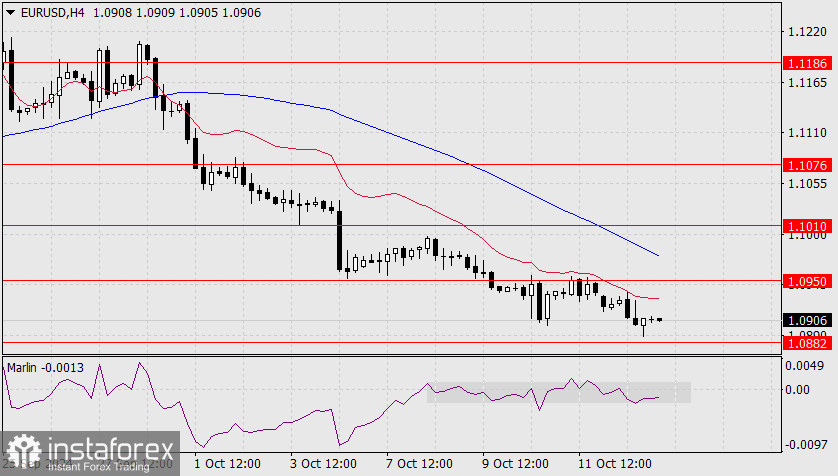The euro stubbornly refuses to reverse direction. Even yesterday's 0.77% rise in the stock market, which set a new all-time high, did not halt the euro's decline. The euro is close to consolidating below the 1.0882 level and collapsing to 1.0777. If this happens, the long-term reversal to a downtrend would have already begun with a turn from 1.1186 in a dull and uneventful manner, without triggering the liquidation of large sell orders (reportedly the largest volumes since April).


On the four-hour chart, the Marlin oscillator has been consolidating along the zero line for so long that it has lost its predictive potential — the instrument could move in either direction. The likelihood of a decline slightly prevails due to the proximity of the MACD line to the 1.0950 level, which strengthens resistance.





















